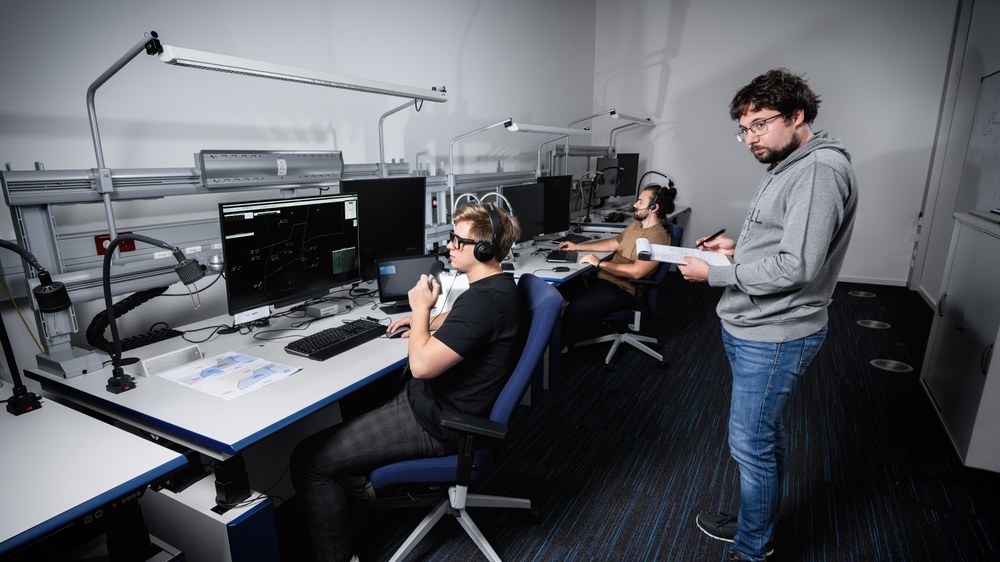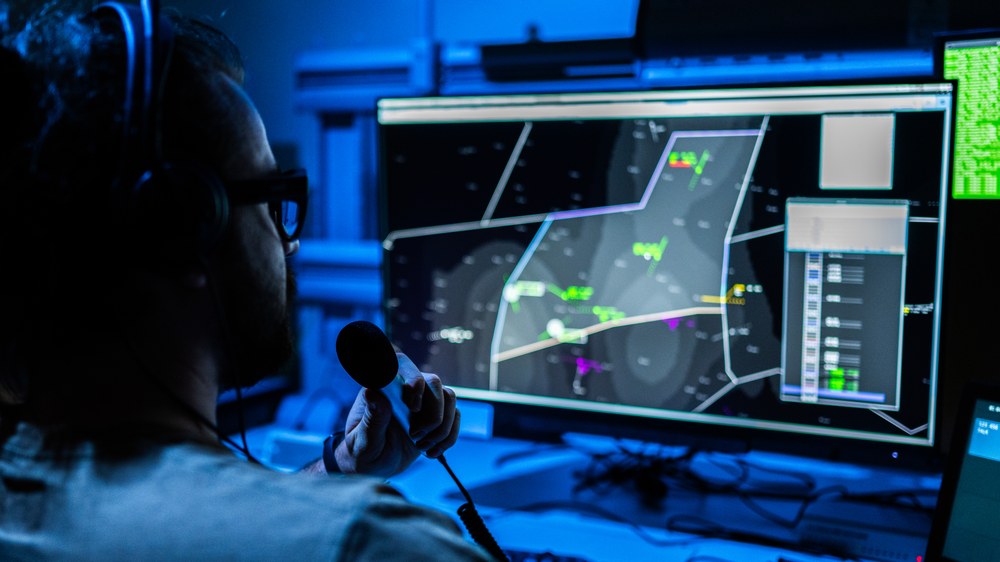A future without contrails?

Air traffic and emissions are rising – and so is the demand to reduce the climate impact of flying. In short, aviation is heading for a massive upheaval. But real improvement has to be about more than alternative propulsion systems and greener fuels. Non-carbon-dioxide effects such as contrails and nitrogen oxide-induced ozone are also adding to change. Avoiding these contributions through clever route planning could be an effective way of reducing the climate impact of aviation.
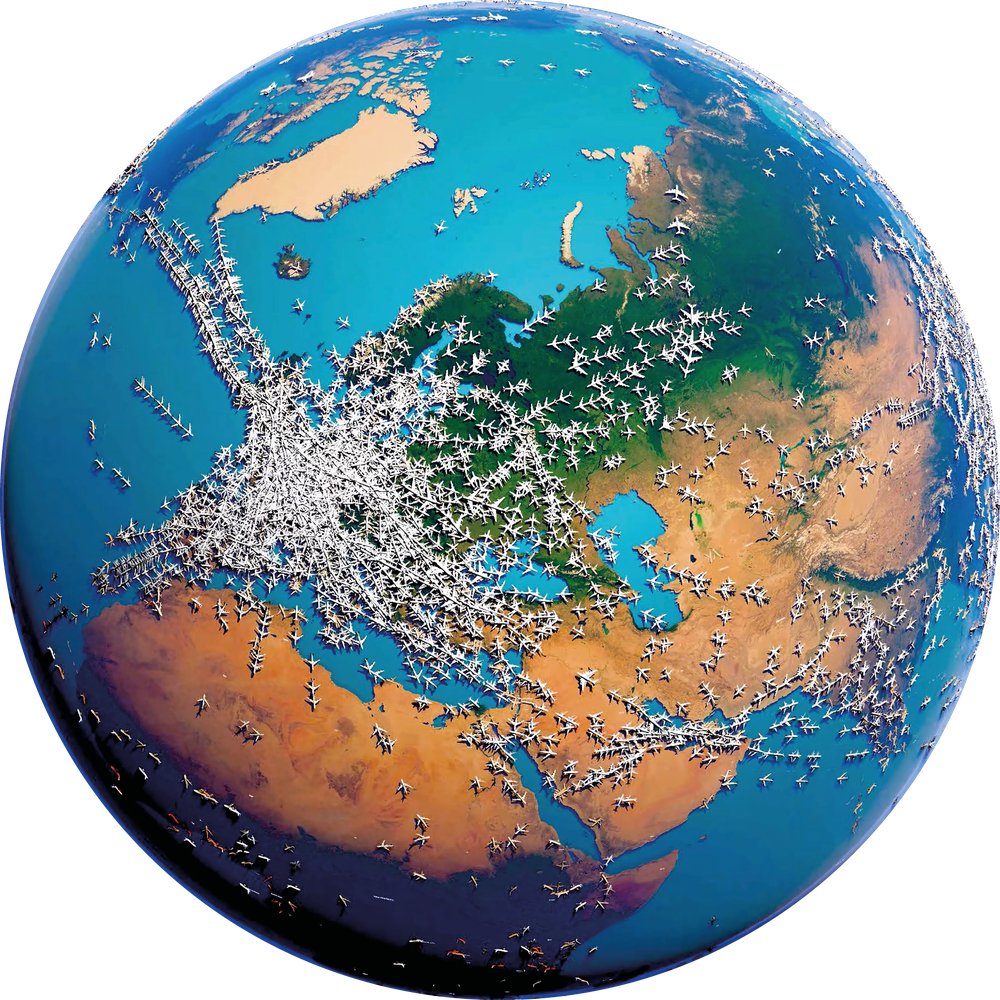
In 2020, Manchester Metropolitan University published a study together with DLR. It found that aviation accounts for 3.5 percent of human-induced climate change, of which approximately 1.6 percent comes from the greenhouse gas that is probably the best-known driver of global warming: carbon dioxide produced by the combustion of kerosene. The remaining two percent is attributed to non-carbon-dioxide effects, including nitrogen oxides, aerosols, ozone and contrails.
Contrails form when the water vapour contained in exhaust gas becomes saturated or supersaturated on contact with the cold ambient air. Water droplets then condense on the soot particles contained in the exhaust gas and freeze immediately in the cold air. If the environment remains sufficiently humid (oversaturated with ice), the contrails will linger for hours, affecting the climate. Contrails have a net global warming effect, especially in the evening or at night. Similarly, nitrogen oxides from aviation lead to the formation of ozone and the breaking down of methane – both greenhouse gases that affect the radiation balance and thus the climate. In some cases, these non-carbon-dioxide effects can last for days, weeks, months or even years, depending on the atmospheric conditions and the processes that they trigger. As such, they are directly related to the flight routes.
D-KULT – Demonstrator for climate- and environment-friendly air transport
D-KULT is testing processes to reduce the climate impact of air traffic. It looks at how we can keep carbon dioxide and non-carbon-dioxide effects, noise and operational costs as low as possible. One key aim is to avoid contrails and reducing non-carbon-dioxide effects at the same time through targeted planning of flight routes – both in simulation and on the basis of real flights. DLR is coordinating the project, with input from the DLR institutes of Atmospheric Physics (coordinating institute), Flight Systems, Air Transport, Flight Guidance and Aerospace Medicine. A number of other organisations and companies are also involved: Germany's DFS air traffic control agency and DWD weather service, software company Jeppesen, aerospace engineering and information technology company PACE, Deutsche Lufthansa and Lufthansa Systems. Airbus Operations, DHL's European Air Transport Leipzig subsidiary, the Federal Association of the German Air Transport Industry (BDL) and cross-border air navigation services agency EUROCONTROL MUAC are associated partners.
How weather conditions affect the climate impact of aviation
Airlines plan routes for their scheduled aircraft and submit them to the responsible control centre for approval. Low kerosene consumption and the shortest possible flight routes are given priority in these plans. At present, parameters such as the environmental sustainability of air traffic are not given the same consideration. The climate impact of these non-carbon-dioxide effects varies greatly depending on the prevailing weather and the 3-dimensional-location of the flight trajectory. For instance, long-lasting contrails only form in ice-supersaturated regions. In other words, the route with the lowest kerosene consumption may not necessarily be the most climate friendly. This is where the D-KULT research project comes in (see info box above). This LuFo project aims to develop methods and tools to reduce the non-carbon-dioxide effects of aviation.
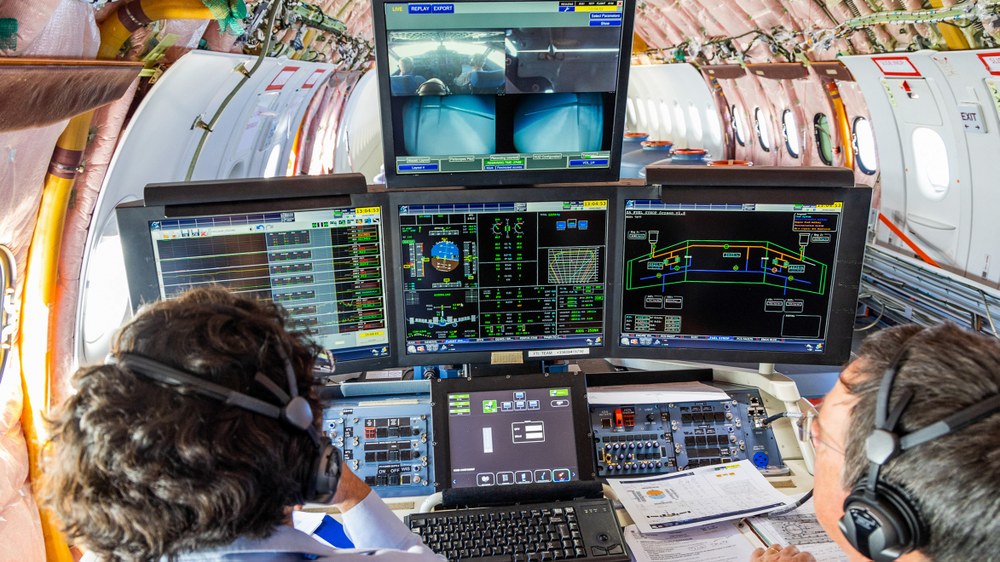
Airbus
The role of air traffic controllers after take-off

Airline flight routes are approved by air traffic control and communicated to pilots shortly before take-off. This takes account of fuel consumption and the weather conditions. Nevertheless, last-minute changes are often made at short notice after take-off. Flight paths might be changed owing to unforeseeable weather events or on-board emergencies which require an unscheduled landing. Sometimes, the flight paths of two aircraft might come too close and pose a safety risk, leading air traffic controllers to specify a course correction for one or both aircraft. These corrections can affect flight altitude, direction or speed. The DIAL research project focuses on ways in which flight route planning and optimisation can be implemented at the same time in future, taking into account weather phenomena and climate aspects, and how those responsible can be supported. The DLR experts involved are analysing all the key factors influencing route planning in civil aviation and developing algorithms and assistance systems for this purpose.
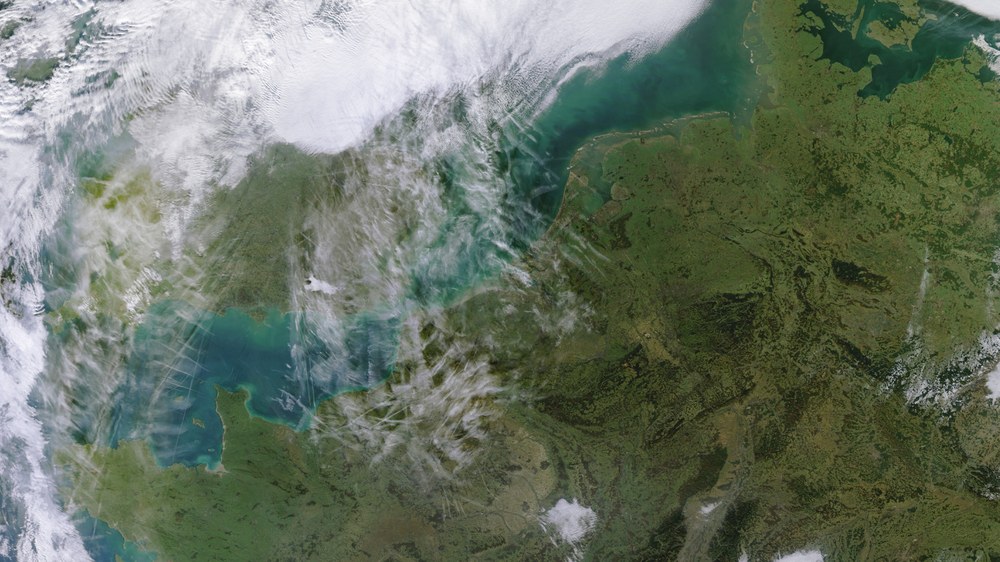
NASA/DLR
Reducing climate impact by preventing contrails
In the future, it should be possible to plan flight routes in such a way that aircraft can avoid areas where atmospheric conditions are likely to result in long-lasting, strongly warming contrails. At the same time, the 'cost' of these detours should remain within an acceptable range and flights should dioxide not be more harmful to the climate due to increased carbon emissions. This means finding the optimum balance between cost, low kerosene consumption and the most climate-compatible route. Researchers have the challenge of predicting as reliably as possible whether contrails will actually form in a certain area at a specific time. To this end, numerical weather forecasting models are being further developed and compared with observations. Observation data from airliners cannot only be used to evaluate scientific models, they are also required to keep the weather simulated in the models close to reality. This makes it possible for the initial atmospheric state of the numerical simulation – 'yesterday's weather' – to be described more realistically.
Satellite images reveal whether our alternative route planning has been successful.
The end goal in sight
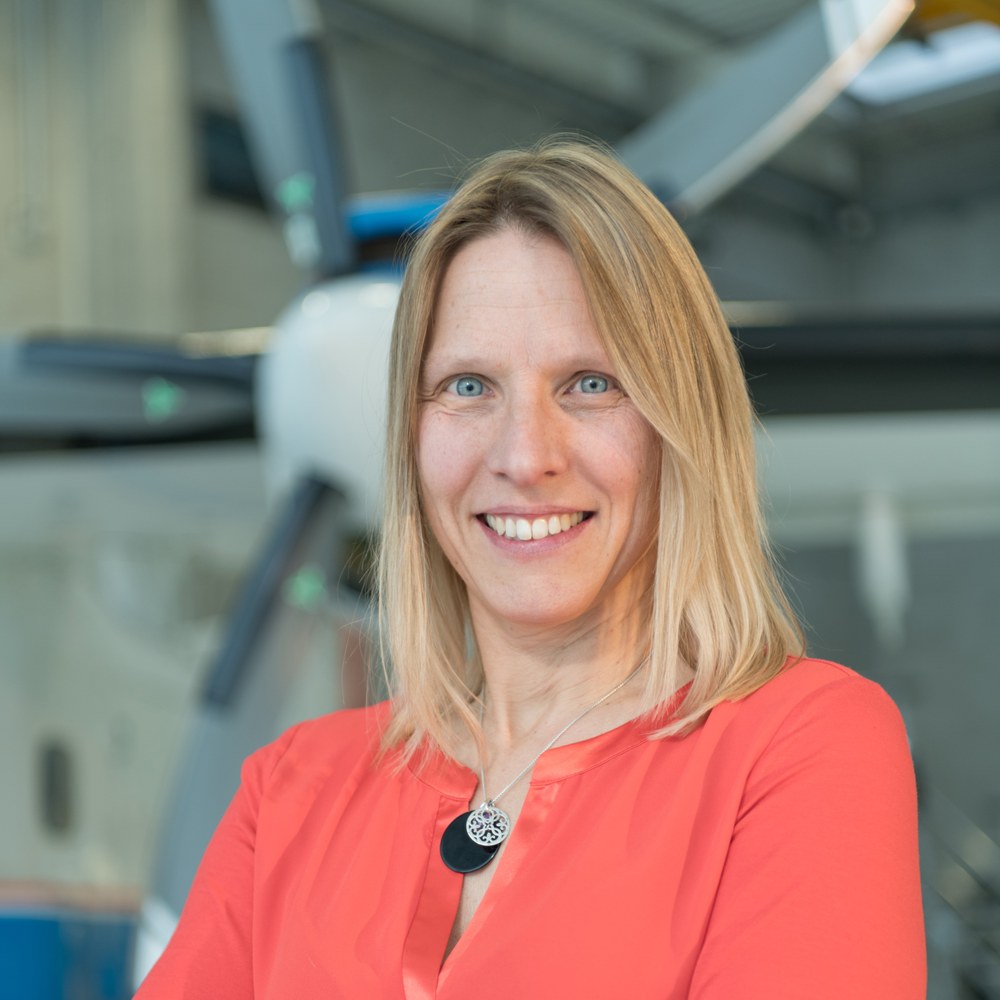
Three questions for Sigrun Matthes. Dr Matthes works as a physicist at the Department of Earth System Modelling for Aeronautics, Space, Transport and Energy at the DLR Institute of Atmospheric Physics, where she leads the D-KULT project.
Why do contrails play such an important role in your research?
Contrails are among the main non-carbon-dioxide climate effects of aviation. They are the only effect that can be seen in the sky with the naked eye. Depending on where they originate, they may have a cooling or a warming effect, while the warming effect predominates on a global scale. In order to gain experience with the implementation of climate-optimised flight routes, we have decided to identify flight routes that avoid the formation of contrails. Satellite images reveal whether our alternative route planning has been successful. Ultimately climate-optimised flight paths have immense potential for reducing the climate impact of aviation, as they could be flown with today's fleet of aircraft.
In 2020, you wanted to investigate the feasibility of operational measures to reduce non-carbon-dioxide effects. How are things looking today?
Back then, we were a long way from flying such climate-optimised routes. Today we are immersed in testing tactical and strategic operational measures. We really are trying to avoid areas with high non-carbon-dioxide effects in real air space. Aviation companies and policy makers have also recognised the potential, so there’s a real spirit of optimism at the moment.
What do you think of the current sentiment?
In D-KULT, we are currently in the process of testing strategies for climate-optimised flight routes in real operations through various demo experiments. On the one hand, German air traffic control is helping us to avoid air traffic crossing sectors where working towards avoiding. At the same time, real systems for strategic flight route planning are also being expanded so that climate-optimised flight can be suggested to airlines on a daily basis. We embarked on this journey together back in 2010. But we need to continue. In making flying more climate-friendly, one of our key aims is to understand the processes in the atmosphere more precisely and to provide reliable assessments of the climate effects. We remain focused on this aim and are moving towards it step by step.
Pushing modelling to the limit

The challenge now is to extend these numerical weather prediction models so that they can estimate non-carbon-dioxide climate effects as accurately as possible. For this purpose, findings from climate modelling relating to the impact of emissions are incorporated into weather forecasting models. The effect of aircraft emissions on the atmosphere is highly complex and heavily dependent on the prevailing meteorological situation, so as yet predicting the climate impact of non-carbon-dioxide effects is challenging. It is important to identify and quantify the different sources of uncertainty. Ultimately, it is essential to know the climate effects with sufficient accuracy to be able to make a robust decision when choosing an alternative, more climate friendly route. D-KULT examines how well such predictions work and how significantly new route calculations affect the climate impact of air traffic. Weather services, air traffic controllers, airlines and the scientific community must work closely together to refine route planning systems with the aim of identifying routes with a lower overall climate impact, all while taking this uncertainty into account.

DLR/NASA/Florian Friz
DIAL – Individual and automated air traffic
DIAL aims to deliver technology and concepts that increase airspace capacity while ensuring safety. It endeavours to connect novel meteorological services for safety and climate with assistance systems to support air traffic controllers. This frees up time for the controllers, which they can use to provide pilots with climate-friendly routes. In doing so, the DLR experts are looking at all influencing key factors for route planning in civil aviation, ranging from general flight guidance concepts to space weather, the effect of operating conditions on engine emissions and the development of cutting-edge calculation methods for creating flight routes. The project is being led by the DLR Institute of Flight Guidance. The DLR institutes of Atmospheric Physics, Combustion Technology, Aerospace Medicine, Air Transport and Communications and Navigation are also involved in DIAL.
Rigid airspace structure makes planning more complex

Ideally, leveraging the full climate potential of flight route optimisation would mean having the capacity to be able to fly wherever you want. But the sky is full, and it is getting even more crowded as time goes on. According to predictions, the number of passenger flights is set to triple by 2050. To prevent accidents, the airspace is divided according to a rigid structure that can be imagined as a high-rise building, where aircraft are only allowed to fly on a specific 'floor'. Over the Atlantic, for instance, the general rule is that you fly out at one altitude and back at another. If you wanted to fly lower due to weather phenomena, you would have to go two 'floors' down. As the change in altitude costs fuel and usually also time, the most economical thing to do is to simply fly straight on through, despite the expected formation of contrails. The additional kerosene consumption might exceed the benefit of avoiding contrails.
100 Flights programme ready to launch
New developments are afoot for aviation in Europe. The 100 Flights programme by the Climate-Friendly Aviation working group will launch on 5 June, just in time for the ILA Berlin international air show. The programme focuses on avoiding contrails in actual flight operations. The D-KULT project is responsible for analysing these flight tests. DIAL is also approaching the home straight in its four-year funding period. The next step will be validation on a larger scale, again in the form of simulation. This work is intended to show that all components are working together and that ongoing optimisation is taking place. A climate response model will be used to estimate the respective climate effect. Days of real air traffic before and after the start of the coronavirus serve as input for the upcoming simulation. The central question is about the actual benefit of connecting all route information for optimisation – or, more precisely: How much fuel could have been saved compared to flying without optimisation? How much less carbon dioxide would have been emitted? And how much global warming could have been avoided by flying around sensitive areas?

Assistance systems will increasingly create more freedom to implement custom, climate-optimised routes.
The best possible support

Three questions for Maik Friedrich of the DLR Institute of Flight Guidance. Dr Friedrich works in the Department of Human Factors and is coordinating the DIAL project.
How could a pilot's job change in the future?
Assistance systems will increasingly find their way into everyday work, as a way of relieving the burden on pilots. This will free them up to implement custom, climate-optimised routes. In our efforts to further automate airspace control, DIAL is investigating two different concepts: single controller operations and sectorless air traffic management (ATM). In the former, only one controller is deployed per sector, supported by assistance systems. These essentially take on the tasks of route planning. In the time gained, climate aspects can be taken into account when planning the route. During our most recent DIAL tests, we examined eight DLR assistance systems developed in our simulators together with air traffic controllers. Two of them proved particularly promising.
What are the potential climate benefits of sectorless ATM?
It is a new approach. Instead of dividing the airspace into sectors, there is only one large airspace. The air traffic controllers are then responsible for a certain number of aircraft from departure to landing, instead of just for a fixed sector. They can guide aircraft on more direct routes between departure and arrival airports, especially in large cross-border airspaces. As a result, we would achieve a higher airspace capacity. And this would help to protect the climate, as the additional capacity can be used to carry out as many 'climate-optimised' flights as possible. The larger the sectorless airspace, the greater the environmental benefits. Concepts such as direct routes or increased automation can also significantly increase the positive impact of the sectorless concept.
How do flight route planning and airspace structure come together?
Another focus of the DIAL project is joining up current climate goals in aviation with their biggest impact factors. The various factors influencing the climate are depicted in realistic simulations and their impact analysed. These simulations can be improved by incorporating novel meteorological services that detect and identify weather risks and disruptive events along flight routes and calculate the climate impact of the route. The simulations can be particularly effective in systematically varying flight route planning and airspace structures and in examining the effects on air traffic and climate impact as realistically as possible. This enables us to provide better support to decision-makers in aviation today.
An article by Stefanie Huland and Michael Müller from the DLRmagazin 175
Related Links
- Project page D-KULT
- Project page DIAL
- DLR Institute of Atmospheric Physics
- DLR Institute of Flight Systems
- DLR Institute of Air Transport
- DLR Institute of Flight Guidance
- DLR Institute of Combustion Technology
- DLR Institute of Aerospace Medicine
- DLR Institute of Communications and Navigation
- DFS air traffic control agency
- DWD weather service
- Software company Jeppesen
- Aerospace engineering and information technology company PACE
- Deutsche Lufthansa
- Lufthansa Systems
- Airbus Operations
- DHL's European Air Transport Leipzig subsidiary
- Federal Association of the German Air Transport Industry (BDL)
- EUROCONTROL MUAC


